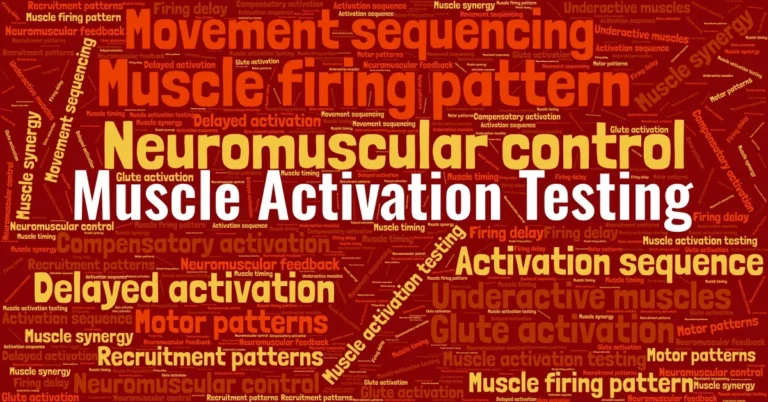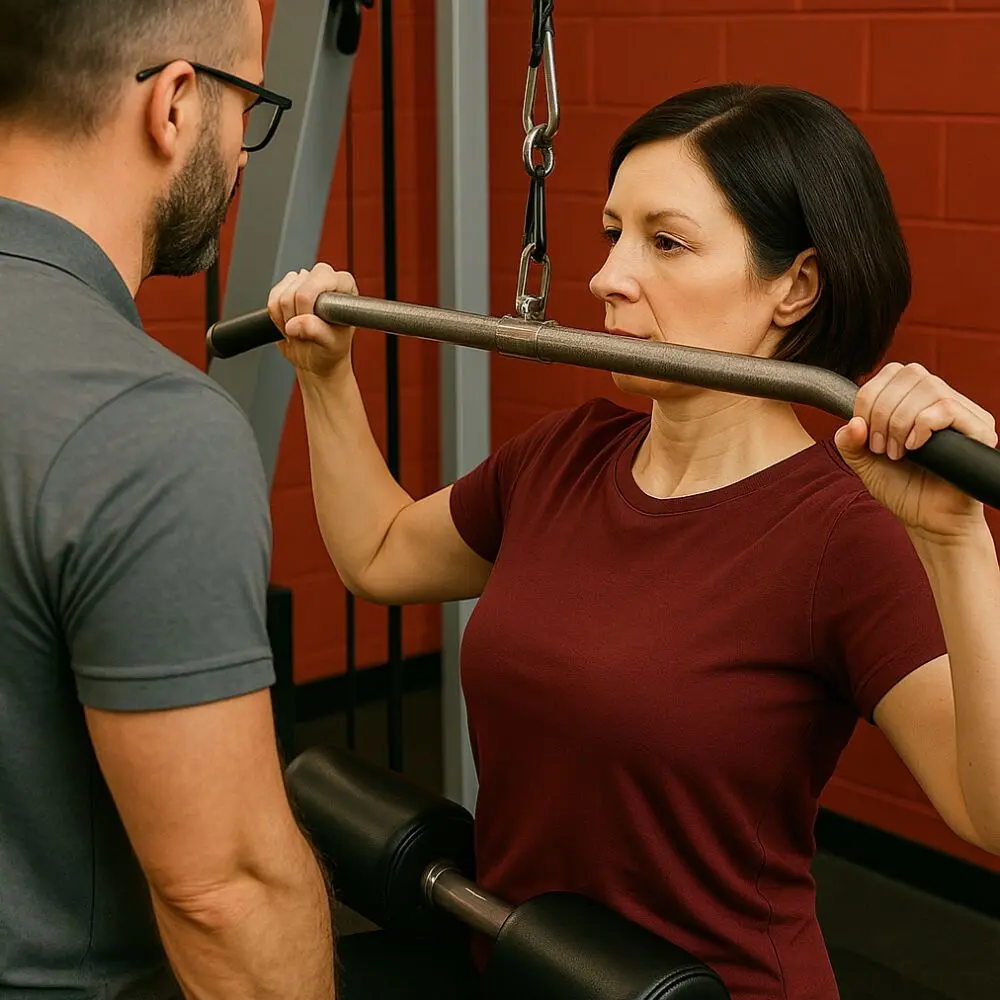Find the Weak Links Your Body Is Compensating For
Muscle Activation Testing
When muscles don’t fire in the right sequence, your body compensates — often with pain, stiffness, or stalled progress. Our activation testing identifies which muscles are underactive, delayed, or overworking, so we can correct faulty movement patterns and help you train, recover, or perform with confidence.

Post-Injury Athletes
Spot lingering inhibition from old injuries that haven’t fully resolved.
Chronic Pain Clients
Reveal muscles that aren’t doing their job—forcing others to overwork.
Older Adults
Restore muscle control lost through inactivity, age, or poor motor patterns.
Why Muscle Activation Patterns Matter
You can have strength without stability, and mobility without control — all because key muscles aren’t firing when they should. Whether you’re dealing with recurring pain or stuck in a performance plateau, the real issue may be buried in your neuromuscular system. We test how your body sequences movement so you stop guessing and start correcting.
- Delayed firing in stabilizers (like glutes or core) often causes strain in joints or larger muscles.
- Compensation from overactive muscles leads to tension, poor posture, or reduced power output.
- Most people never realize their body is working harder than it needs to — until we test it.


What We Measure in an Activation Test
Muscle activation testing uses neuromuscular science to reveal hidden dysfunctions — so we can see which muscles are firing, which are lagging, and which are compensating. Instead of chasing pain or surface symptoms, we identify the true cause of imbalance by testing how your brain and body coordinate movement.
This is more than checking strength. We’re assessing firing sequences, timing, and control across key movement chains. Are your glutes late to engage? Is your core activating before you lift? Do superficial muscles take over because stabilizers are underactive? These patterns directly affect your posture, power, and injury risk.
Here’s what we evaluate:
-
Muscle Firing Sequence → Are key stabilizers (like glutes, core) activating first?
-
Compensatory Overuse → Are larger muscles working too hard to mask instability?
-
Neuromuscular Coordination → Does your movement flow with efficiency, or feel disconnected?
-
Recruitment Under Load → Do patterns break down when resistance or fatigue is added?
Muscle activation testing helps uncover why your movement breaks down — before it leads to pain or plateaus.
What are signs that your muscles aren't activating properly?
Delayed movement, poor control, or fatigue in certain muscles can signal poor muscle activation. You might not feel your glutes engage during a squat, or notice your quads dominate instead. These are signs of faulty recruitment patterns and disrupted neuromuscular control.
-
Glutes not firing → back or hamstrings take over
-
Core lagging → spine collapses under load
-
Shoulders overworking → poor scapular stabilization
📌 When muscles don’t activate in the right sequence, compensation leads to strain—and long-term movement breakdown.
-
What should you do after a muscle activation test?
After testing, your kinesiologist will prescribe corrective exercises to retrain motor control and improve neuromuscular timing. These drills help restore proper muscle firing so you can move efficiently and avoid overload.
-
Exercises target underactive areas (e.g., glutes, deep core)
-
Reinforce clean movement patterns with better control
-
Training adapts based on how your body responds
📌 Assessment always comes first—then we build a smarter, safer intervention plan.
-
Can poor muscle activation affect performance and posture?
Yes. When support muscles like the glutes or core don’t activate properly, posture breaks down and performance suffers. This leads to poor force production, inefficient movement, and higher injury risk.
-
Weak glutes → lower back strain and sluggish stride
-
Underactive core → spinal instability and poor control
-
Movement economy drops → more fatigue, less power
📌 Better activation means better posture, better strength, and better results
-
A Simple 3 Step Process
No Guesswork, just results
Getting started is simple – muscle activation testing helps us uncover the real reason behind compensation, fatigue, or form breakdown. From there, we design movement strategies that rebuild neuromuscular control and restore efficient performance.
Choose the Assessment That Fits You Best
tools that actually tell us something
Understanding how your body moves is step one. These science-backed assessments reveal dysfunction, imbalance, or asymmetry—so your program is based on facts, not guesses.
Comprehensive Movement Assessment
Biomechanical Assessment
Core Stability Assessment
Postural Assessment
Gait Analysis
Functional Movement Assessment
Finding the Muscles That Should Be Working—But Aren’t
If you’re frustrated by plateaus, nagging pain, or movements that just don’t feel “right,” I understand. Many clients come in thinking they’re just weak or out of shape—but the truth is, their body isn’t firing the way it should. That’s not your fault. Most programs don’t check how you move before piling on exercises.
With over 15 years in kinesiology and corrective exercise, I specialize in identifying underactive muscles and faulty movement patterns using data—not guesswork. Through muscle activation testing and neuromuscular analysis, we’ll pinpoint the weak links that are slowing you down or putting you at risk. Then, we build a plan that actually addresses the root issue—so you can move efficiently, stay pain-free, and perform with confidence.





